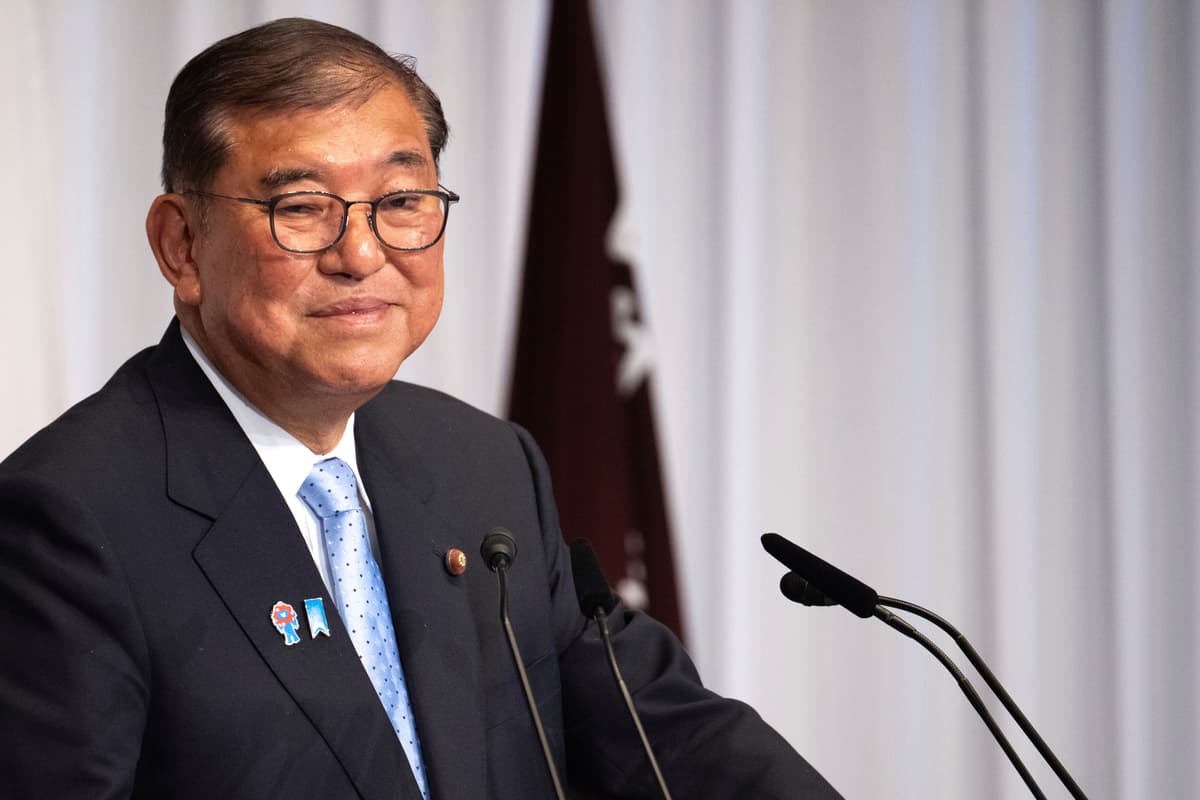World
Trump and Japan Reach $550 Billion Trade Agreement Amid Tensions

President Donald Trump and Japanese Prime Minister Shigeru Ishiba have signed a significant trade and investment agreement, allowing Japan to invest $550 billion in the United States. This development comes at a critical time for Mr. Ishiba, who is facing political pressure following disappointing results in Japan’s upper house elections.
The agreement emerged after intense negotiations led by Japan’s chief trade negotiator, Ryosei Akazawa, who visited Washington for the eighth time to finalize the terms. The deal includes a 15 percent tariff on most Japanese goods entering the U.S., particularly automobiles. While this figure is high, it is a notable reduction from the previously proposed 25 percent tariff, set to take effect on August 1, 2023.
Despite this progress, challenges remain. The U.S. will continue to impose 50 percent tariffs on Japanese steel and aluminum. Furthermore, Japan has not agreed to reduce tariffs on imports of American agricultural products, including rice.
Both leaders expressed relief and satisfaction following the agreement. They emphasized the importance of maintaining the strong military alliance between the United States and Japan, which serves as a counterbalance to rising tensions in the Asia-Pacific region.
Mr. Trump, in a statement on Truth Social, expressed enthusiasm about the potential economic impact of the agreement, predicting it would lead to “hundreds of thousands of jobs” for Americans. He remarked that this investment represents an unprecedented commitment from Japan, which has historically faced scrutiny over its trade practices.
In Tokyo, Mr. Ishiba highlighted the significance of the 15 percent tariff, stating it is the lowest rate applied to any country with a trade surplus with the United States. Last year, Japanese exports to the U.S. exceeded imports by more than $63 billion, a figure that, while substantial, is significantly lower than the trade surplus enjoyed by China.
The agreement is particularly crucial for Mr. Ishiba as he navigates political challenges from far-right parties that have gained traction in Japan. While he did not specify his political future, he expressed hope for further dialogue with Mr. Trump, indicating a desire to strengthen bilateral relations.
According to Japan’s Kyodo news agency, Mr. Ishiba noted that the agreement was the result of “consistent advocacy and strong efforts to reach out to the United States.” He emphasized the importance of protecting national interests while achieving a deal that benefits both nations.
The reaction from Japanese business leaders has been overwhelmingly positive. Yoshinobu Tsutsui, chairman of the Japan Business Federation (Keidanren), described the negotiations as a fruitful endeavor focused on national interests. Similarly, Tatsuo Yasunaga, chairman of the Japan Foreign Trade Council, referred to the deal as a “major milestone” for Japan’s economic strategy.
As both countries move forward, the implications of this agreement will likely resonate beyond trade, potentially influencing future negotiations with other international partners. The commitment from Japan to invest heavily in the U.S. economy reflects a complex relationship shaped by decades of trade dynamics, and it remains to be seen how these developments will affect the broader geopolitical landscape.
-

 Lifestyle3 months ago
Lifestyle3 months agoLibraries Challenge Rising E-Book Costs Amid Growing Demand
-

 Sports3 months ago
Sports3 months agoTyreek Hill Responds to Tua Tagovailoa’s Comments on Team Dynamics
-

 Sports3 months ago
Sports3 months agoLiverpool Secures Agreement to Sign Young Striker Will Wright
-

 Lifestyle3 months ago
Lifestyle3 months agoSave Your Split Tomatoes: Expert Tips for Gardeners
-

 Lifestyle3 months ago
Lifestyle3 months agoPrincess Beatrice’s Daughter Athena Joins Siblings at London Parade
-

 World3 months ago
World3 months agoWinter Storms Lash New South Wales with Snow, Flood Risks
-

 Science3 months ago
Science3 months agoTrump Administration Moves to Repeal Key Climate Regulation
-

 Science2 months ago
Science2 months agoSan Francisco Hosts Unique Contest to Identify “Performative Males”
-

 Business3 months ago
Business3 months agoSoFi Technologies Shares Slip 2% Following Insider Stock Sale
-

 Science3 months ago
Science3 months agoNew Tool Reveals Link Between Horse Coat Condition and Parasites
-

 Sports3 months ago
Sports3 months agoElon Musk Sculpture Travels From Utah to Yosemite National Park
-

 Science3 months ago
Science3 months agoNew Study Confirms Humans Transported Stonehenge Bluestones









